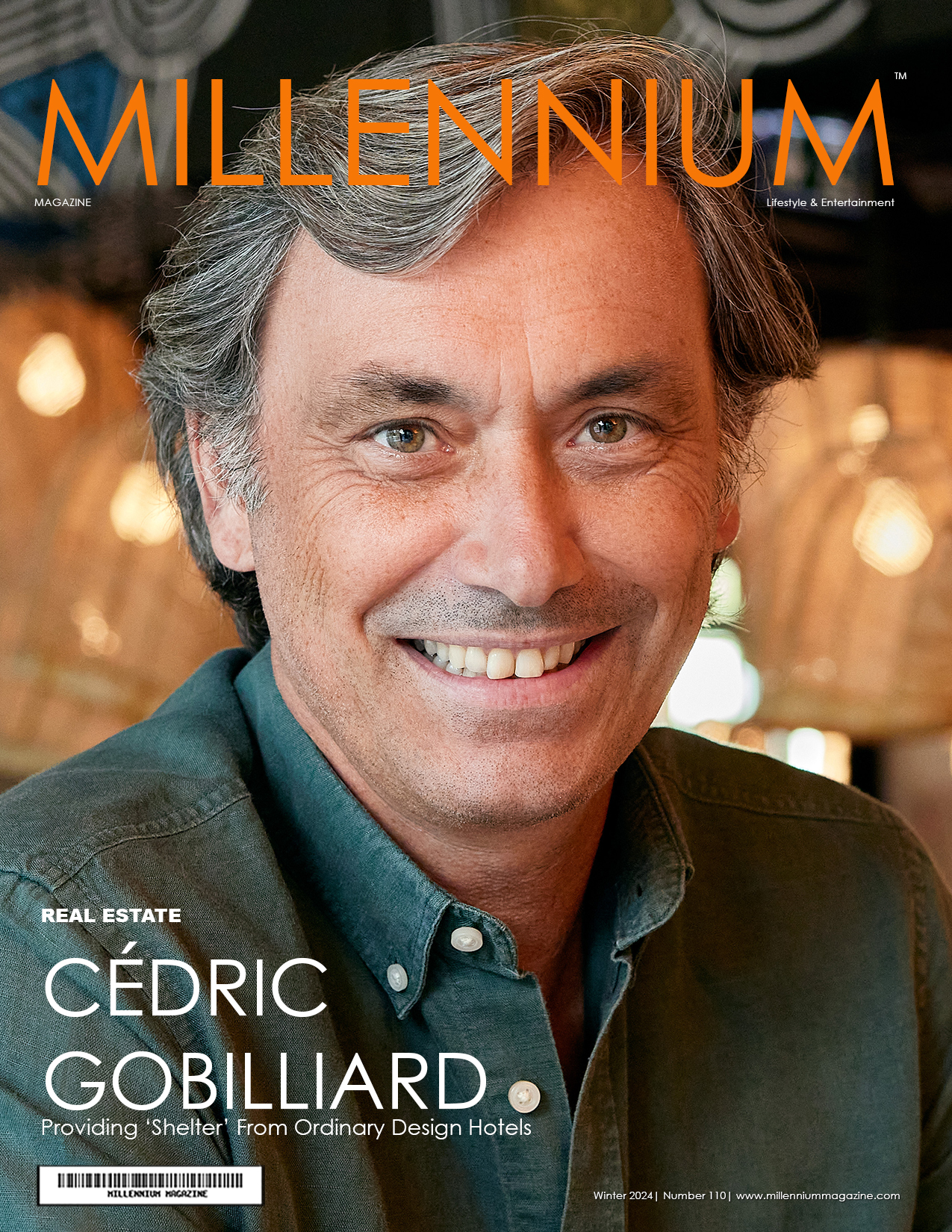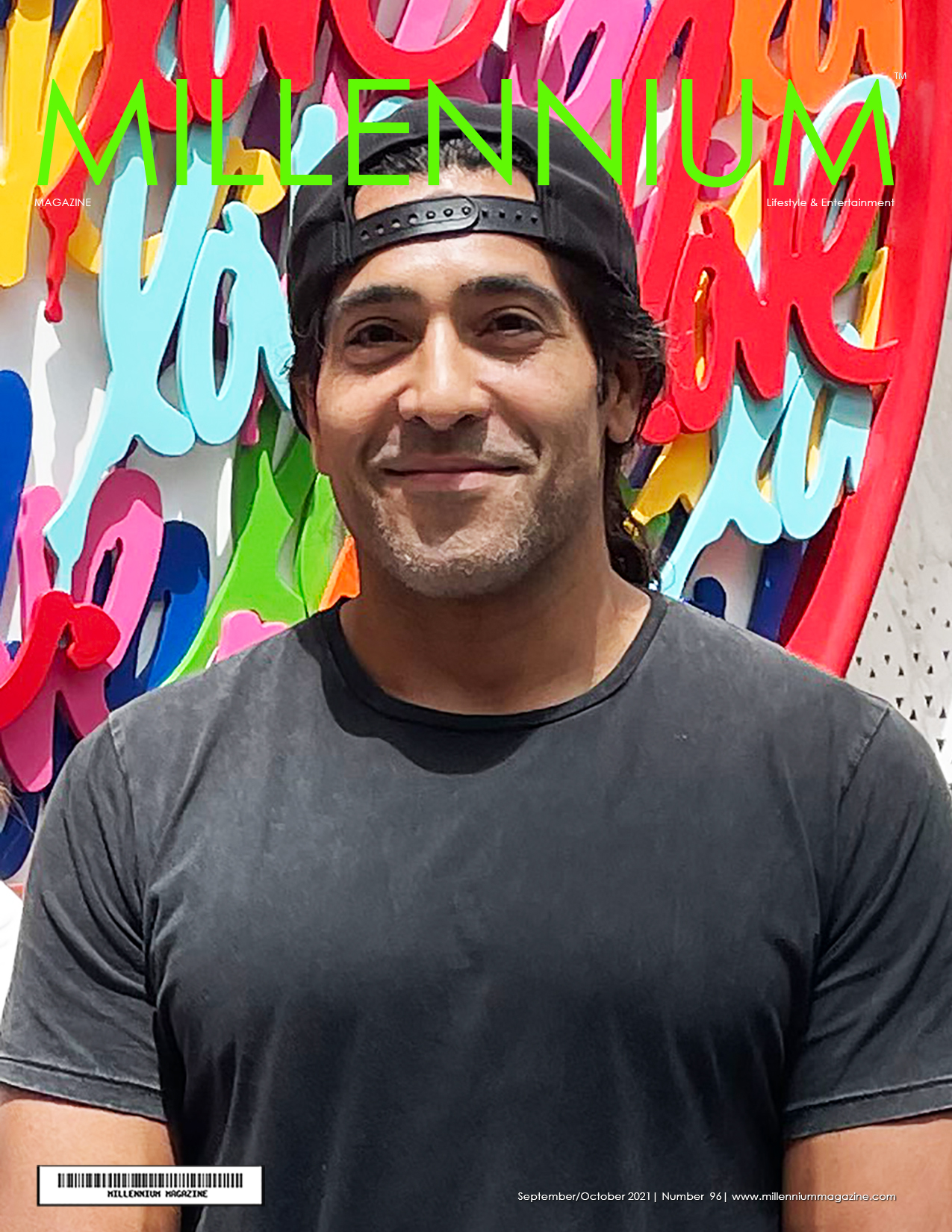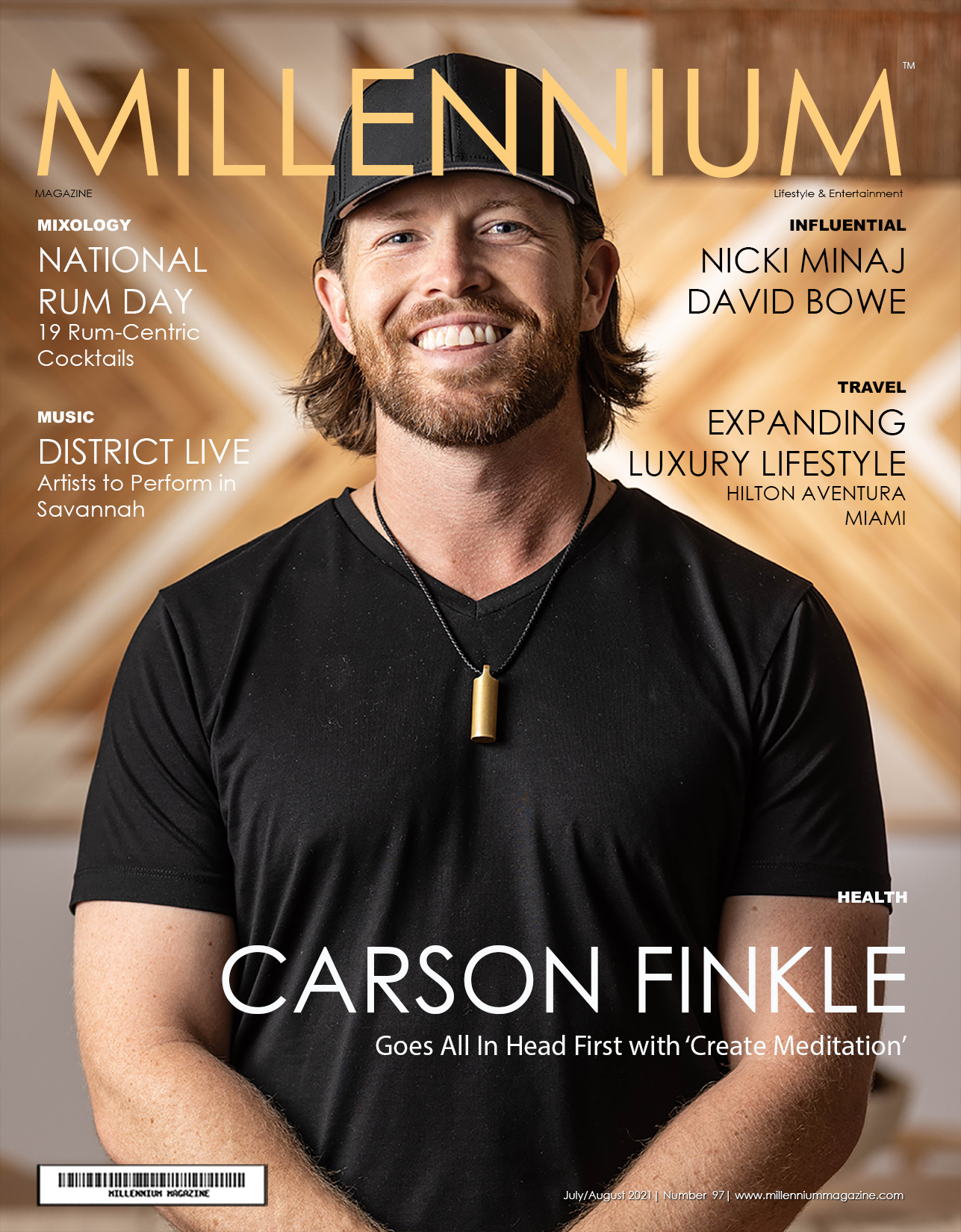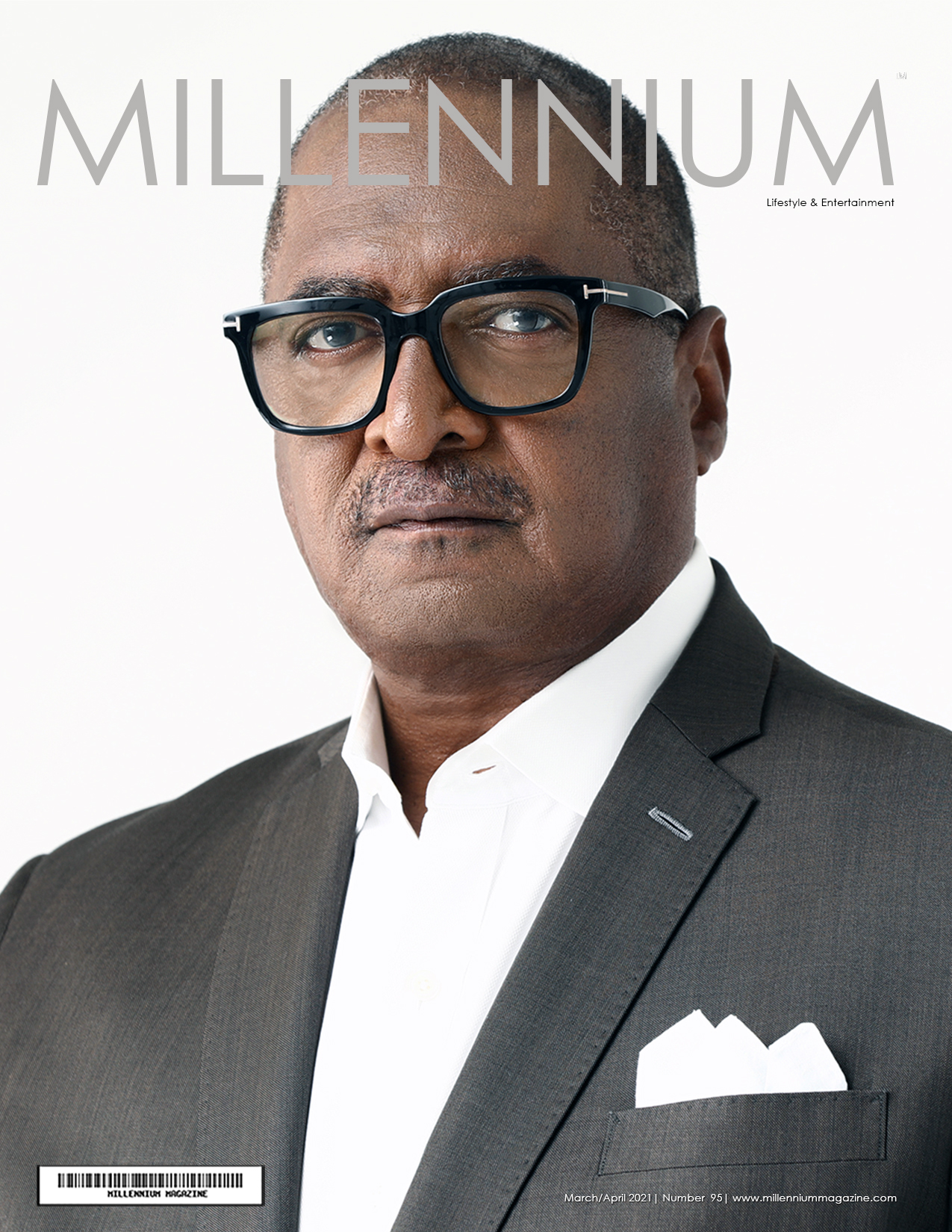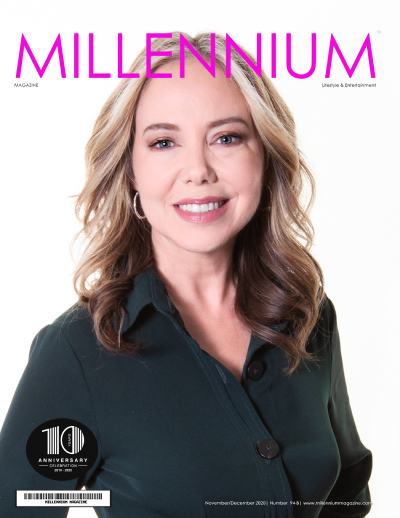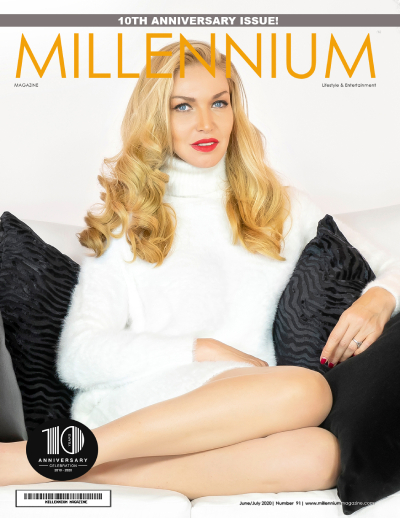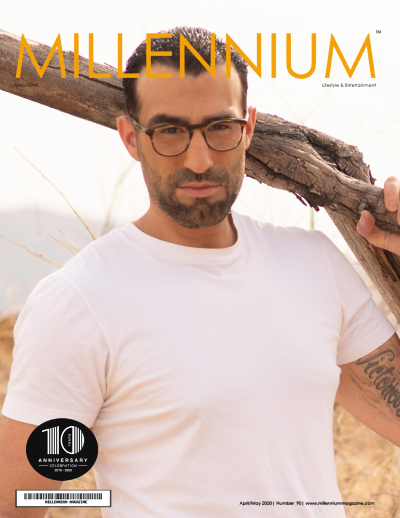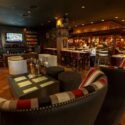Whether or not you are heading to Japan for the Tokyo 2020 Olympics and Paralympics this summer, there are many Olympics-related happenings and cultural events taking place this year that will get you into the spirit.
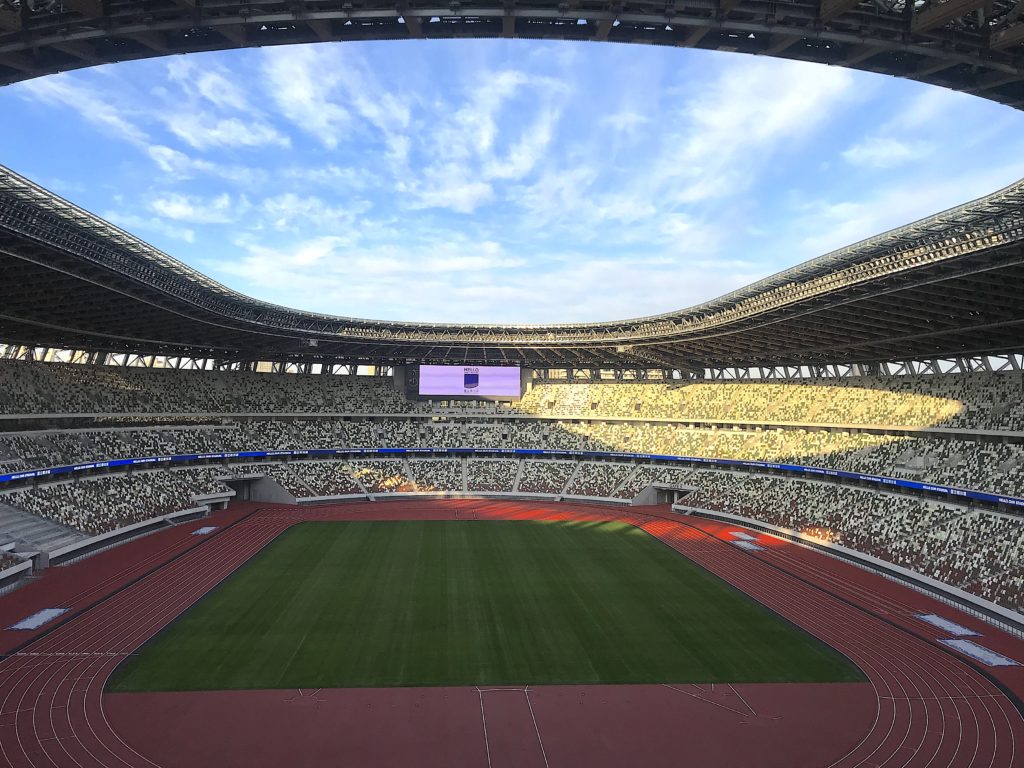
As one of the themes for Tokyo 2020 is “The Reconstruction Games,” many competitive soccer, baseball and softball events along with cultural festivals will be staged in cities to raise international awareness and funds for the continuing rebuilding of Iwate, Miyagi, Fukushima and Kumamoto, all affected by the 2011 earthquakes and tsunami. Olympics fever will be in full pitch, starting with the Olympic Torch Relay’s final leg in Fukushima Prefecture during Spring “Cherry Blossom Season” and continuing with cultural, fine arts and performing arts events leading up to and following the games. These include the Tokyo 2020 Nippon Festival, planned by the Tokyo 2020 Organizing Committee as well as the “Tokyo, Tokyo Arts Festival” and “Flame of Recovery” events.
Additionally, “Live Sites” with giant television screens will broadcast all the major athletic events in real time during the Games at some of Tokyo’s most popular historic sites (including Yoyogi Park, Inokashira Park and the Tokyo Metropolitan Government Building), as well as in the aforementioned cities hosting soccer matches. The new Japan Olympic Museum, opened a few blocks from the already-storied New National Stadium. immerses visitors not only in the excitement of this years Games, but also the memories and milestones of all of the Games dating back to ancient times.
It Takes a Village
The this past December, architects and construction teams were putting the finishing touches on the Olympic/Paralympic Village complex along the city’s Harumi waterfront that will up to 18,000 athletes and key personnel during the Olympic Games and 8,000 during the Paralympic Games. Given how much care and planning has gone into this LEED-certified project, environmentally conscious fans will be happy to learn that the development will be quickly repurposed as a residential and shopping area with winning views of the city.
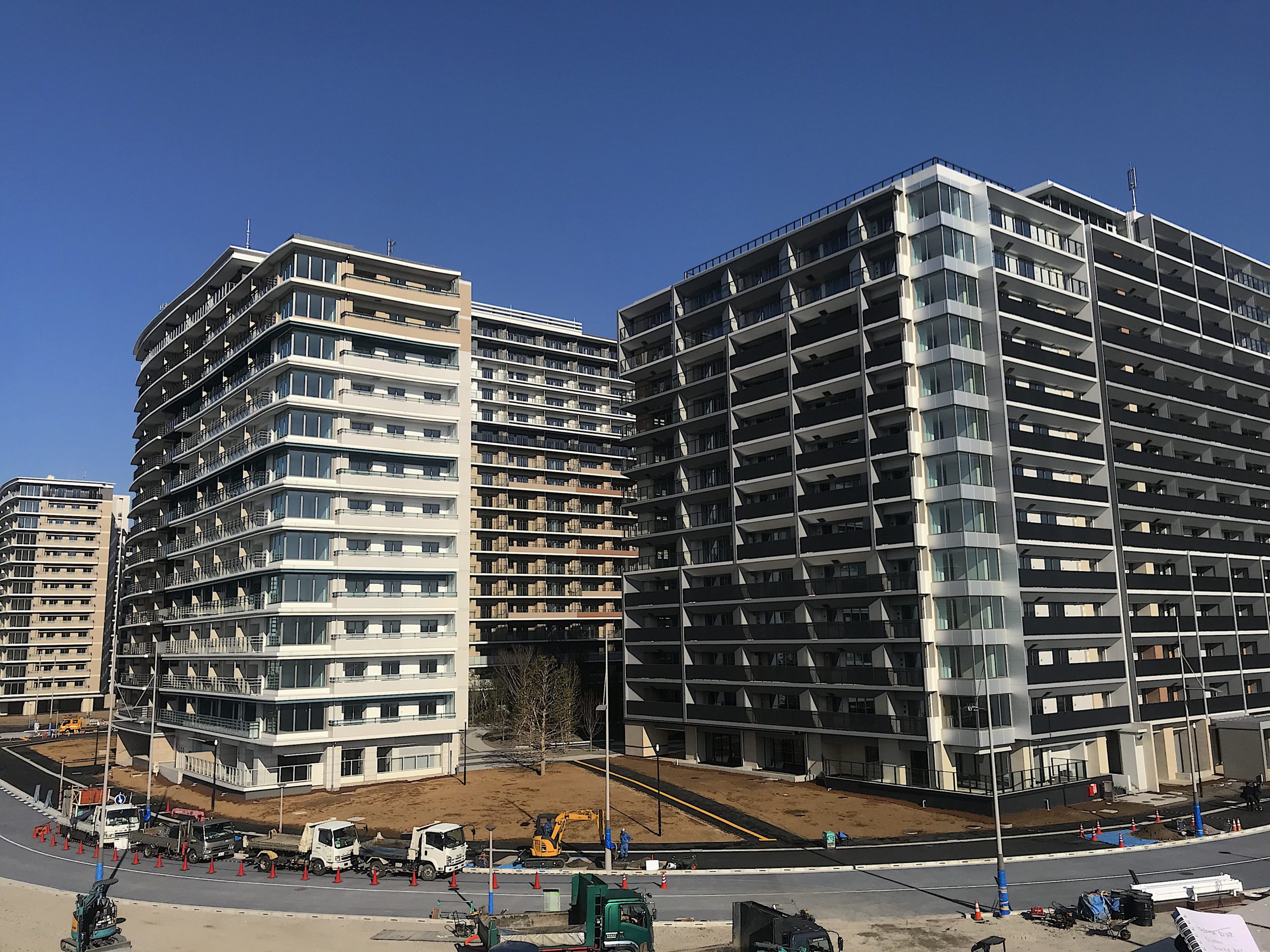
The concept of the “village,” meanwhile, spreads exponentially when one realizes there are 43 venues including 11 in the “Heritage Zone” previously used at the 1964 Tokyo Olympics and several in cities affected by the 2011 earthquake and tsunami. This, in turn, brings to mind what part of the greater village you will be occupying. Here are a few gold-standard hotels you may want to look into if you are ready to make your claim on a room and airline tickets.
Olympics attendees, especially those lucky enough to attend the opening or closing ceremonies, will become better acquainted with the name Kengo Kuma, who designed the New National Stadium. In the wake of controversy that arose with bringing Zaha Hadid’s original winning but overly ambitious stadium concept to fruition, Kuma presented his environmentally friendly and functional design following the same approach to building materials and open spaces that brought him global acclaim in the architecture world.
However, this stadium is not Kuma’s first time in the ring. Through the years, Kuma and his Tokyo-based firm made their mark with buildings such as the Starbucks Reserve Roastery, SunnyHills Cake Shop in Minami-Aoyama, Asakusa Culture Tourism Center and the Nezu and Suntory art museums…all of which can be visited as part of a formal Kuma architectural tour or on their own. Another iconic building, The Capitol Hotel Tokyo, took shape when the new owners (Tokyu Hotels) tasked Kuma with transforming the structure the former Tokyo Hilton Hotel into a lodging directly appealing to the most sophisticated 21st century travelers. Ten years on, the hotel is as timely as ever, with a similar emphasis on Japanese hardwoods and natural light that echoes the thought behind the New National Stadium design.
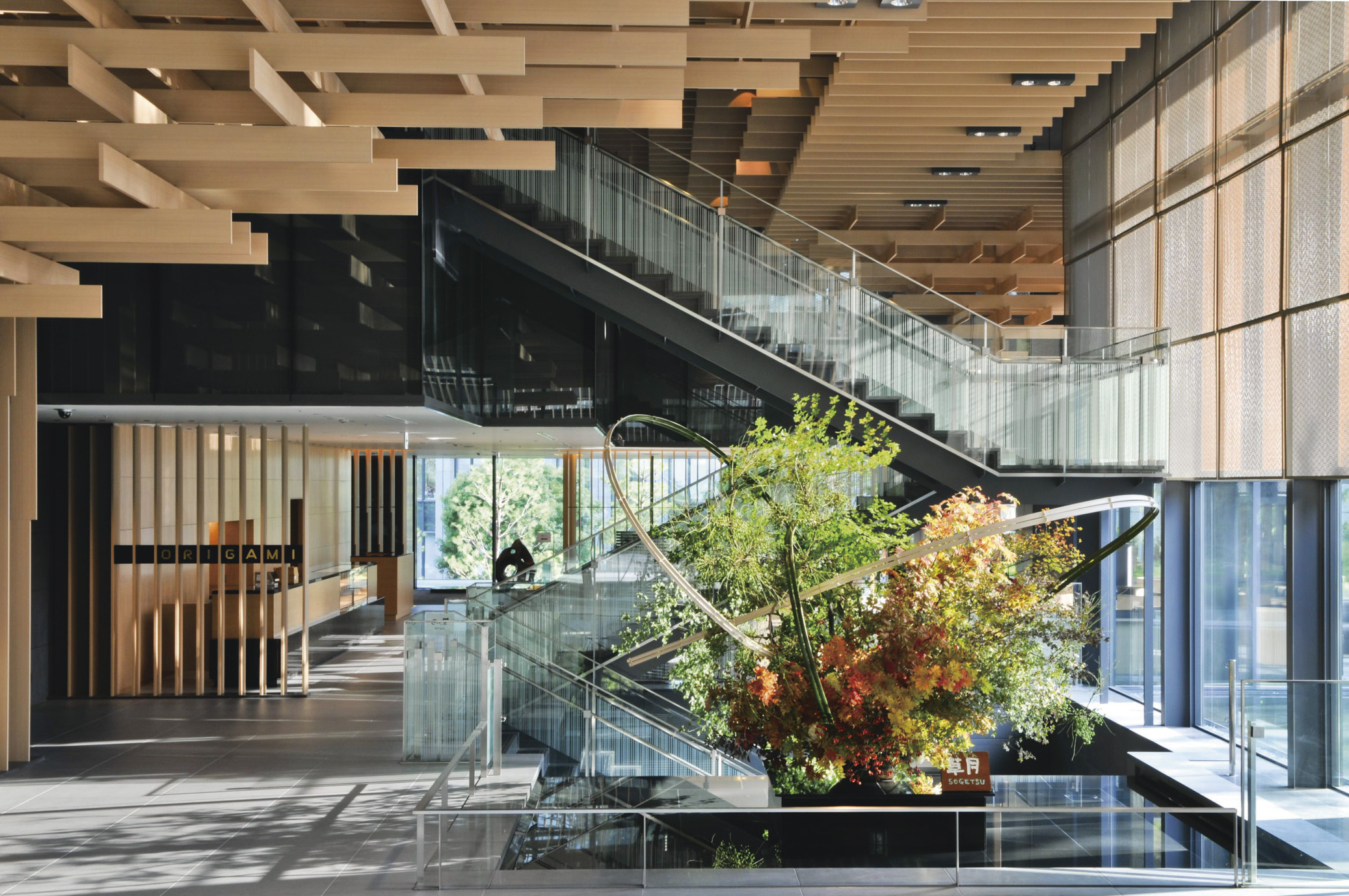
In describing his approach, Kuma told the Princeton Architectural Press that, “Transparency is a characteristic of Japanese architecture, (and) I try to use light and natural materials to get a new kind of transparency.” This holds true for his stadium concept, which blends thoughtful integration of hardwood from most of Japan’s prefectures with forestry-inspired colored seating and other features that use natural lighting to full advantage.
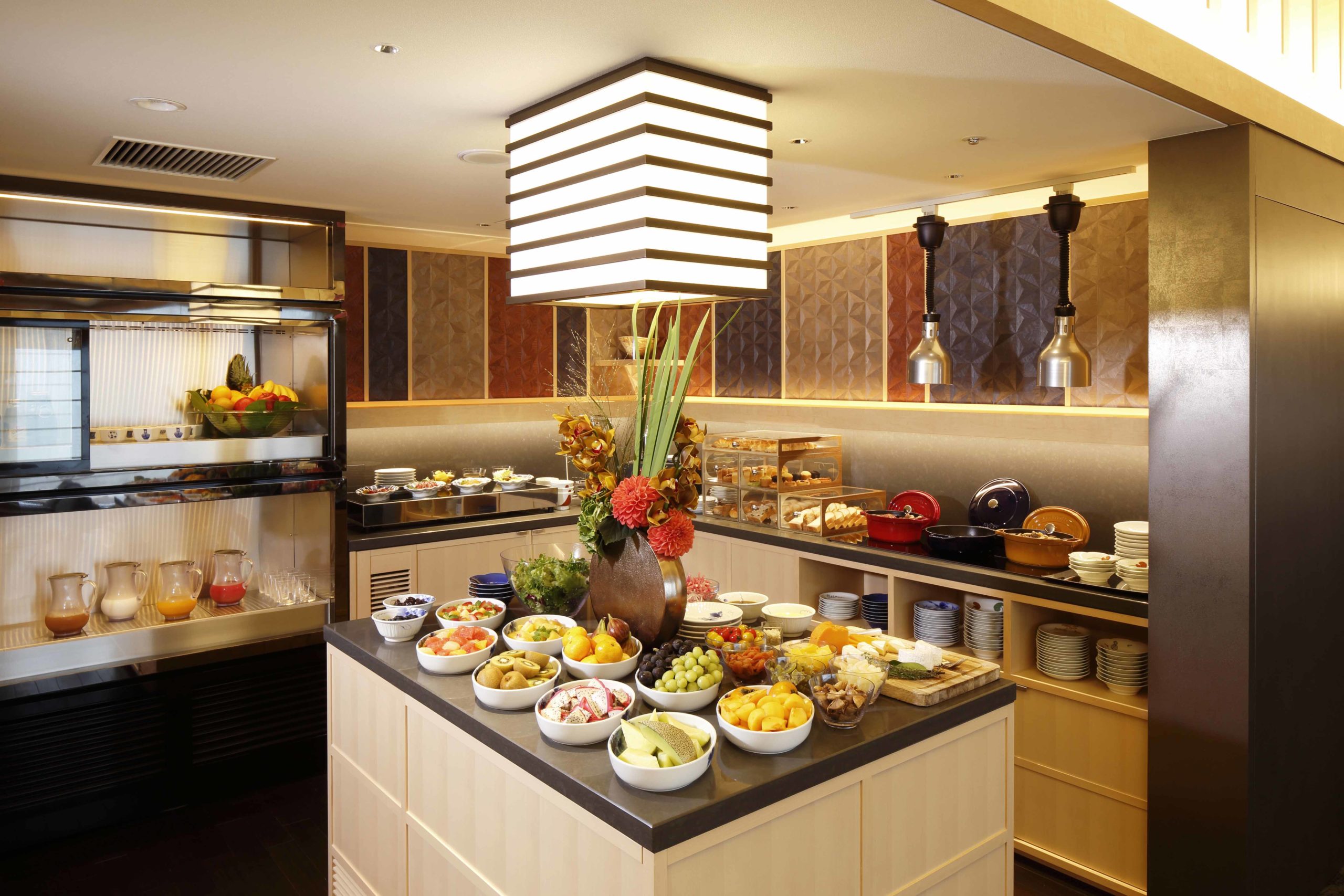
Located in the posh Akasaka business district, The Capitol Tokyo offers many “gold medal” attributes business travelers actively search for. The lobby and concierge area are spacious, calm and uncharacteristically quiet for a property located in the heart of one of Tokyo’s major business districts. This is a credit to the astute staff having the check in, check out and customer service procedures down to a science. However, the ambiance itself is calming, from sleek furnishings to dramatic works by Toko Shinoda, the leading Japanese artist working in the sumi ink medium, which connects the original structure’s past and present.
Kuma’s vision of creating an effortless aesthetic flow between indoors and out succeeds thanks to the efforts of landscape architect Shunsaku Miyagi and interior design firm Kanko Kikaku Sekkeisha. Although there have been upgrades throughout the decade, the flow between updates is just as seamless. Room partitions based on shoji screens feel like natural outgrowths of Kuma’s wood construction, allowing each guest the flexibility to have as much sunlight, privacy or city views as he or she desires. The view for the top tier suite overlooks the National Diet Building and includes a beautifully organized workspace and executive entertaining sections. The rest of the suites are organized in a similar way, which compliments the aesthetics of the neighboring Hie Shrine.
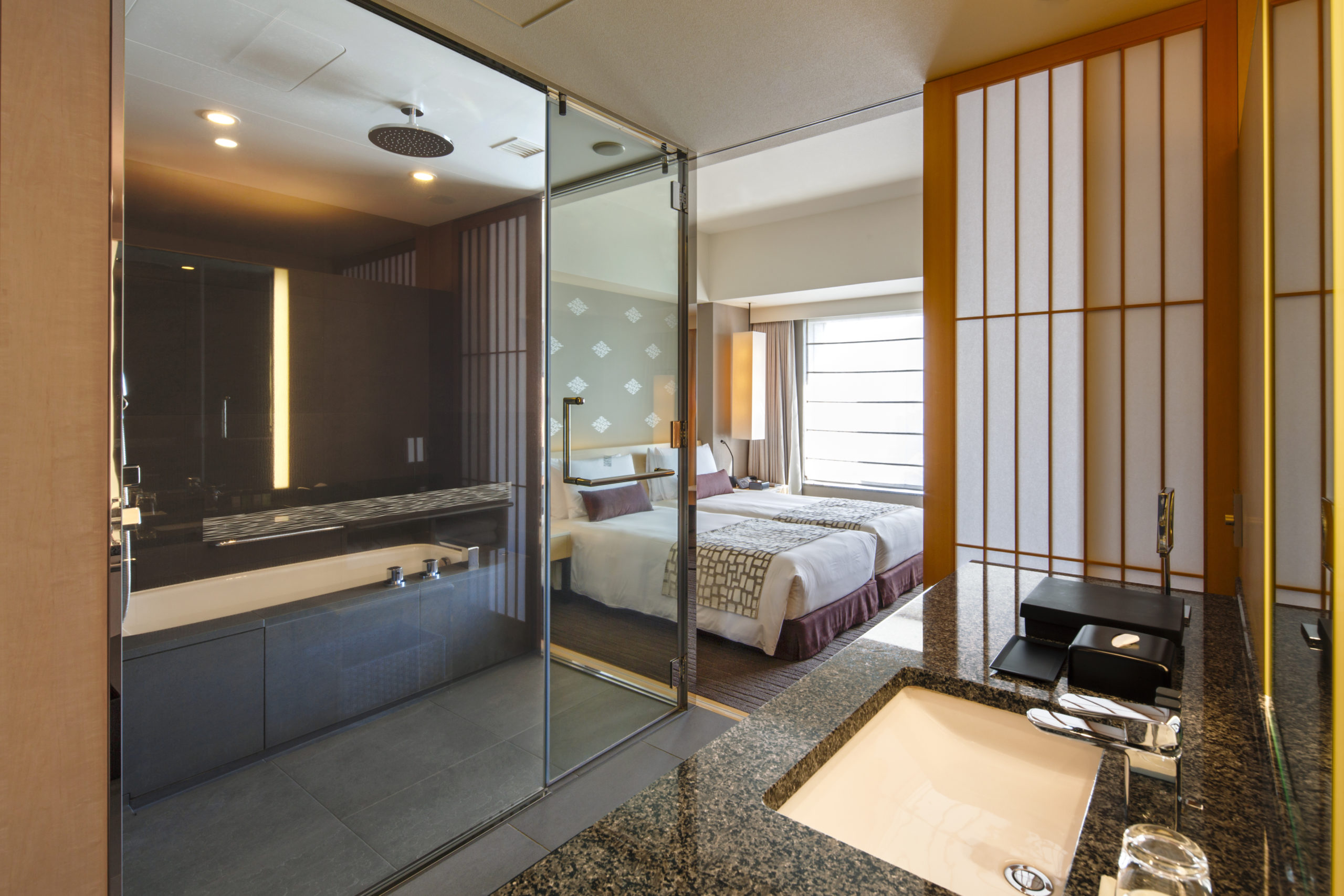
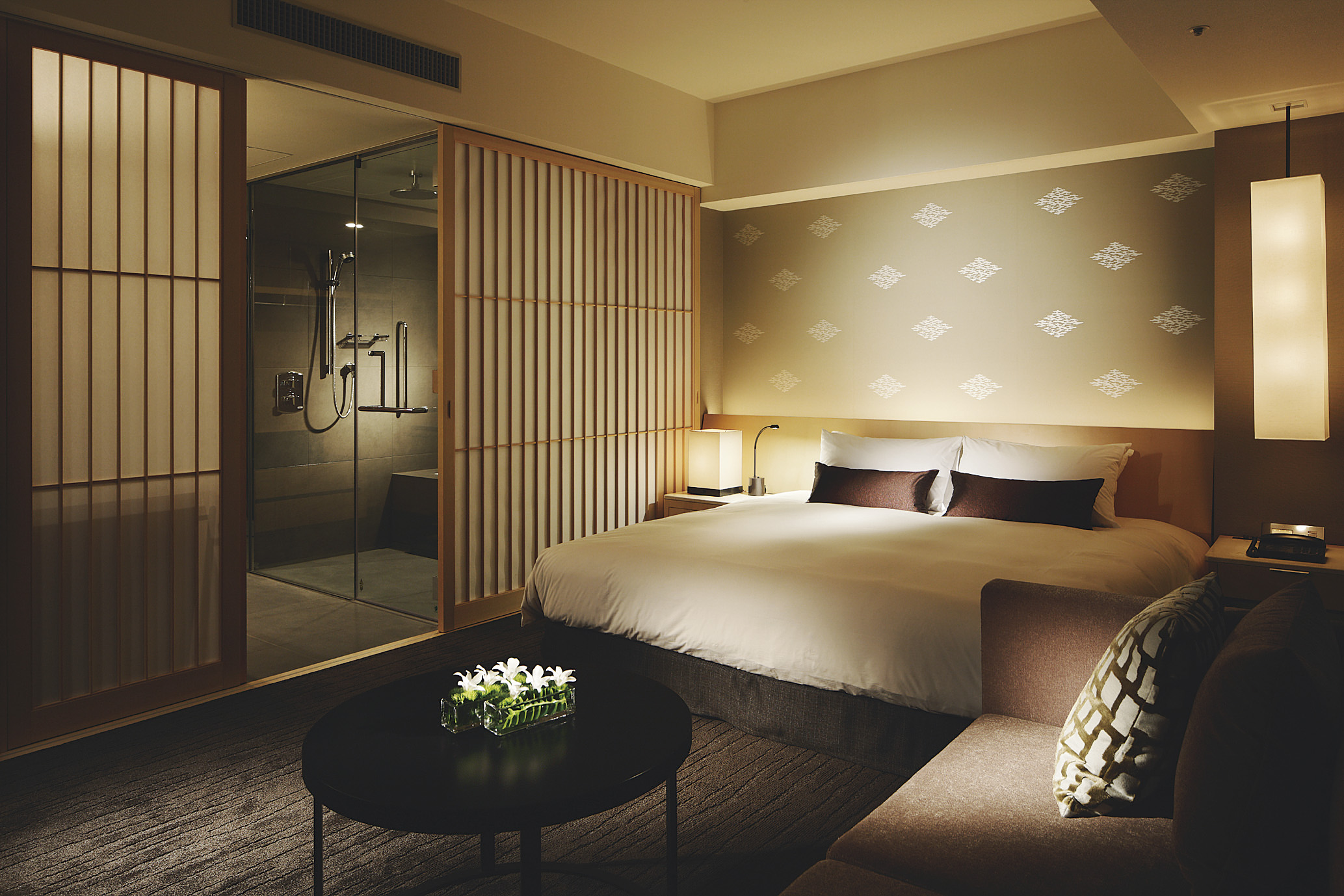
There is also a delightful sense of continuity flowing through the restaurants and bars as well as the meeting spaces, which are simply decorated yet sparkle with personality and natural beauty. Under the direction of chef Minoru Tsuge, Suiren integrates formal and formal kaiseki (multi-course) presentations with tepanyaki and sushi presentations that are rooted in traditions but are anything but routine. Origami, overseen by chef Naohito Nakamura, unites an all-day dining room, lobby lounge and pastry boutique into a light and vibrant dining concept that feels even more upscale than one would expect from a similar arrangement at a comparable hotel.
Kuma’s appreciation of natural light and landscapes extends to the hotel’s health club and spa facilities. The 14th floor Jacuzzi room and swimming pool terrace are pretty mind-blowing given the positioning of the windows—especially when windows are opened, weather permitting. As the hotel is steps from several subway lines connecting guests to key neighborhoods—including the stadium and other sites that will be hosting different events around town during the games—one can argue the city figuratively and literally is at one’s feet. However, the sky is also the limit in ways hotel guests may not have imagined.
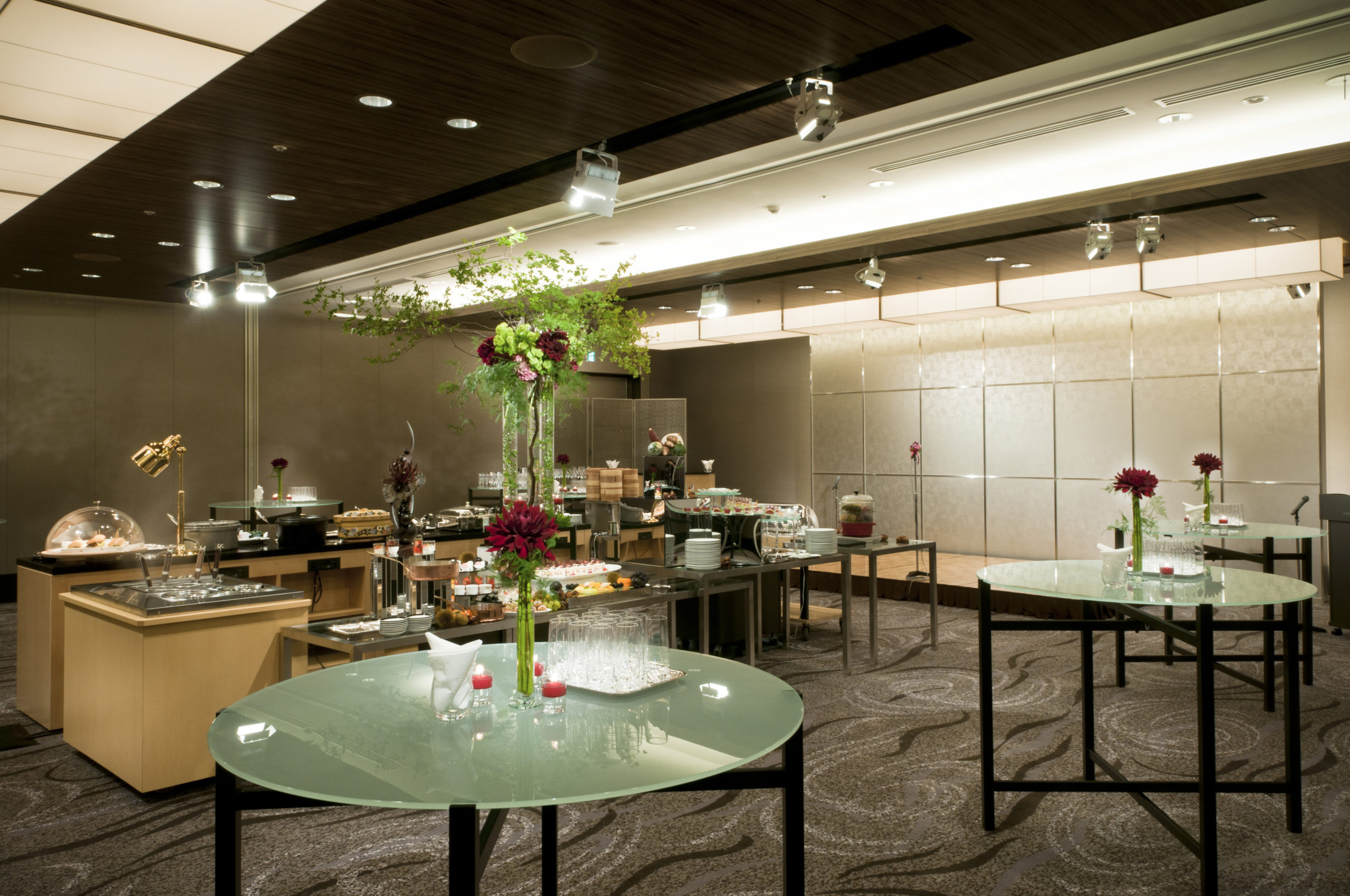
Those looking to stay in a truly central location within Tokyo will want to check out the Keio Shinjuku Tokyo Hotel, steps away from Shinjuku Station, a major hub for numerous train and bus lines crisscrossing the city. While this property’s aesthetics is old school east-meets-west, with the lobby having a bit of a timeless Midtown Manhattan vibe, it’s the subtle details and special amenities that make this hotel up-to-the-moment.
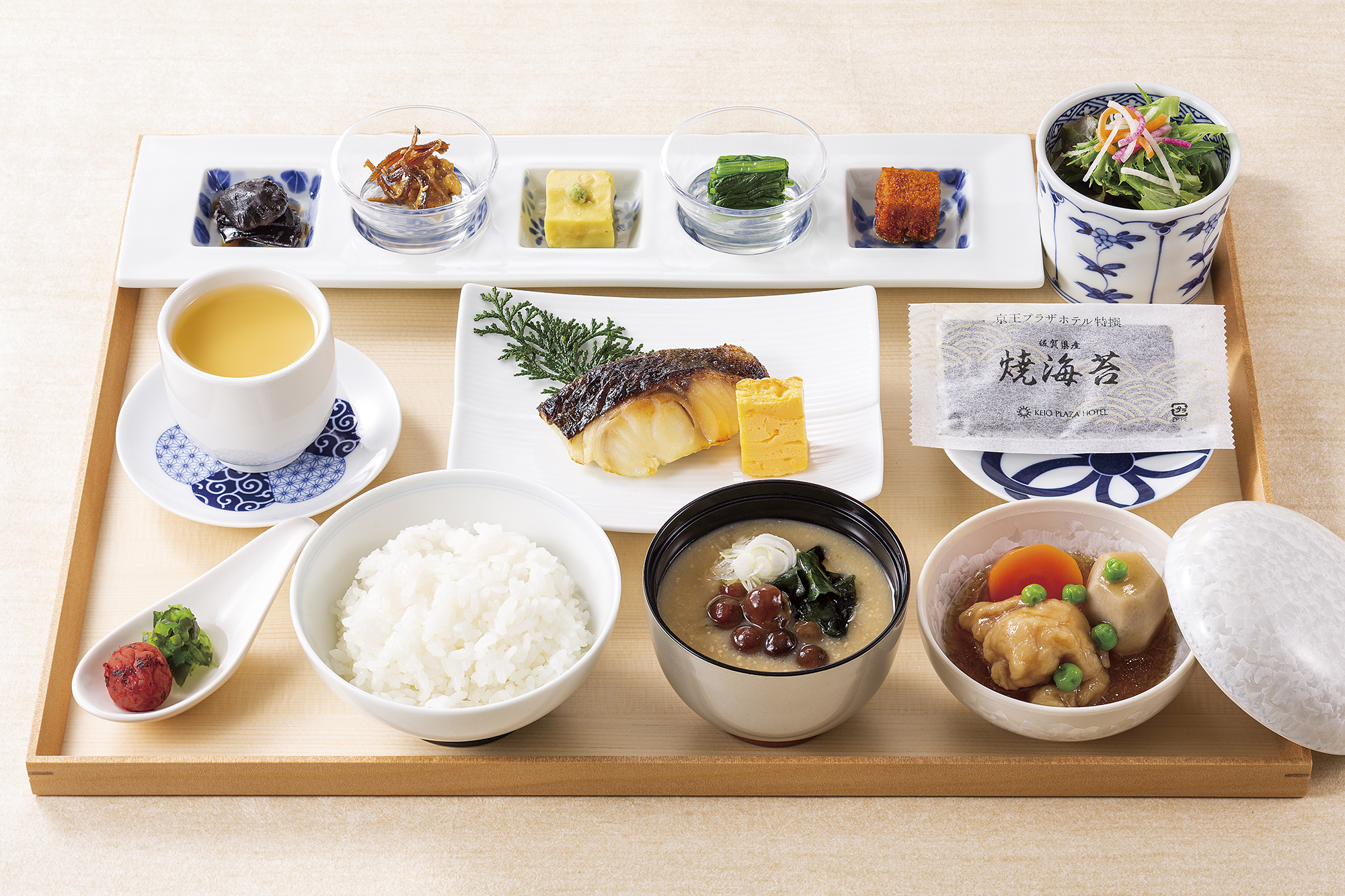
In terms of dining, the Keio Plaza is a microcosm of Tokyo, with numerous individual restaurants specializing different Japanese specialties and preparation, from Tepan-yaki (skewered grilled meats and vegetables) to formal Kaiseki (multi-course meals), tempura, sushi, and soba noodles along with Chinese, Korean and Western options all with interiors that reflect different aspects of Japanese food culture and can be adapted for a variety of corporate dinners. If you plan to add breakfast to your firm’s corporate package, the best place to fuel up for the day is the Glass Court. Here, one can find a rotating selection of freshly prepared Western and Japanese morning dishes served alongside fresh-baked bread and pastry and excellent coffee. Many of the stations are manned, ensuring freshness and assistance should a dish need a modification for a vegetarian or other dietary need.
The selection of banquet halls and meeting rooms is as diverse and interesting. On the 4th floor, the Nishiki and Ohgi rooms can easily accommodate gatherings of up to 200 guests for a sit-down dinner or as many as 360 with theater-style seating, while the Hana holds a capacity of 450 to 900 guests. Eminence Hall, suited for medium-size gatherings of up to 450 people, incorporates three stages as well as six-language simultaneous interpretation and broadcast equipment, various audio systems and lighting equipment. Banquet rooms on the higher floors, meanwhile, offer panoramic city views and elegant settings for lunch and dinner gatherings. The grand dame of the lot is The Concord Ballroom, with enough space for 900 people for a sit-down dinner and up to 1,000 people for a reception. This space further impresses with lighting equipment and audio systems facilitating simultaneous interpretation of up to eight languages.
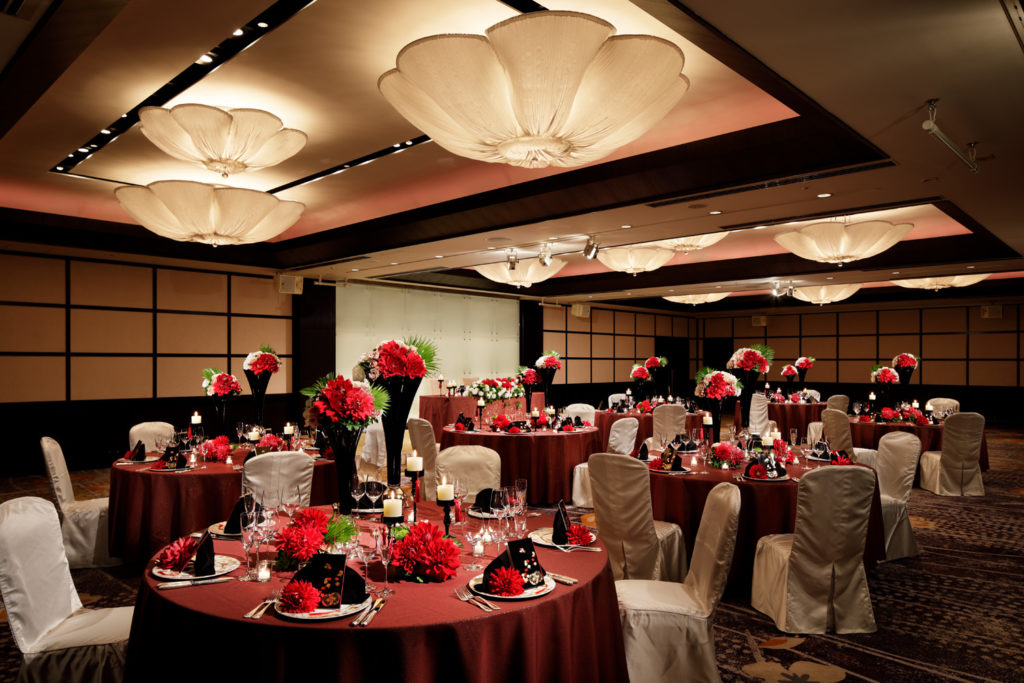
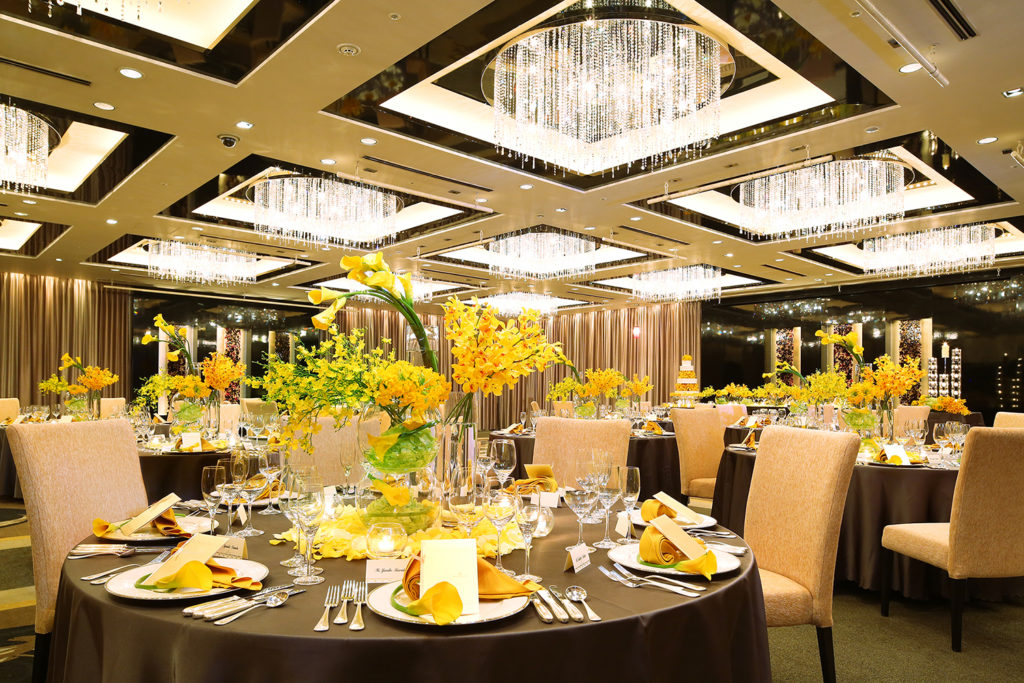
In addition to always-helpful and strong Wi-Fi signals, rooms are outfitted with mobile phones for use in town. Domestic calls within Japan as well as overseas phone calls to (the United States as well as Australia, Canada, China, France, Germany, Hong Kong, Italy, Singapore, South Korea, Taiwan and the United Kingdom) can be placed free of charge, adding value with greater piece of mind during the trip. There is also a health club open to guests as well as paved walking and running path that takes advantage of the neighborhood’s landscaping and scenery.
The concierge desk is also well equipped to recommend their own cultural programs as well as guidance for must-do attractions tailor made for large groups. Through March 16, the hotel is ginning up Olympic spirit with its “The Power of Athletes on the World Stage” photo exhibition, focusing on some of the extraordinary sportsmen and women who will be representing Japan this summer. The surrounding neighborhood, meanwhile, is a celebration of the forthcoming Games with logos and lovable Olympic and Paralympic mascots (Miraitowa and Someity) gracing every possible wall, nook and cranny, but in sophisticated and artistic ways.
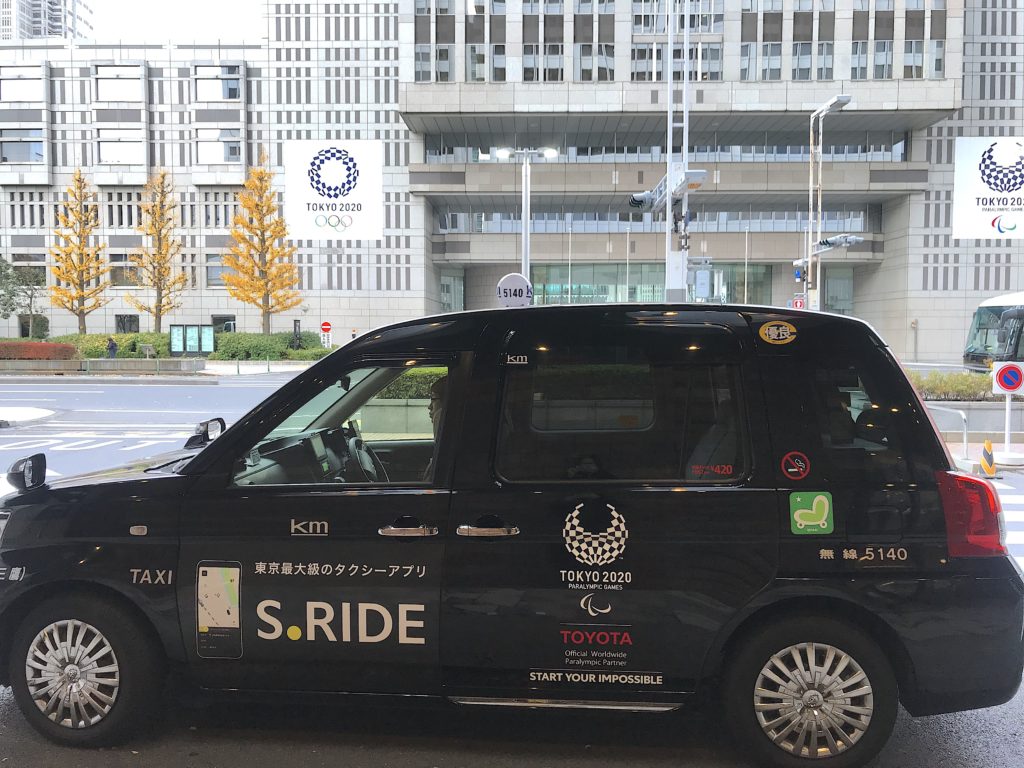
Other recommended nearby attractions include the Sengoku Photo Studio near Akihabara, the city’s gaming, electronics and anime boomtown. Kids-at-heart can gear up as the Samurai did in the Sengoku era, with armor and props for photo session whose results are sure to be priceless. The Suginami Anime Museum, open daily except Monday and free of charge, presents a comprehensive history of Japanese anime, from its origins and history to the glimpse of its future. Displays are all-ages appropriate and interactive, ensuring visitors can get creative while understanding anime’s international appeal. Its library includes a database on anime creators and a movie
While The Millennials Shibuya is a capsule hotel (and the target market may be implied in the name of the property) it has much to offer people of all ages traveling light or doing a short Tokyo stopover en route to another destination. It does simplicity with such style, in fact, that its ratings on different travel sites are as high as many of Tokyo’s four and five star hotels.
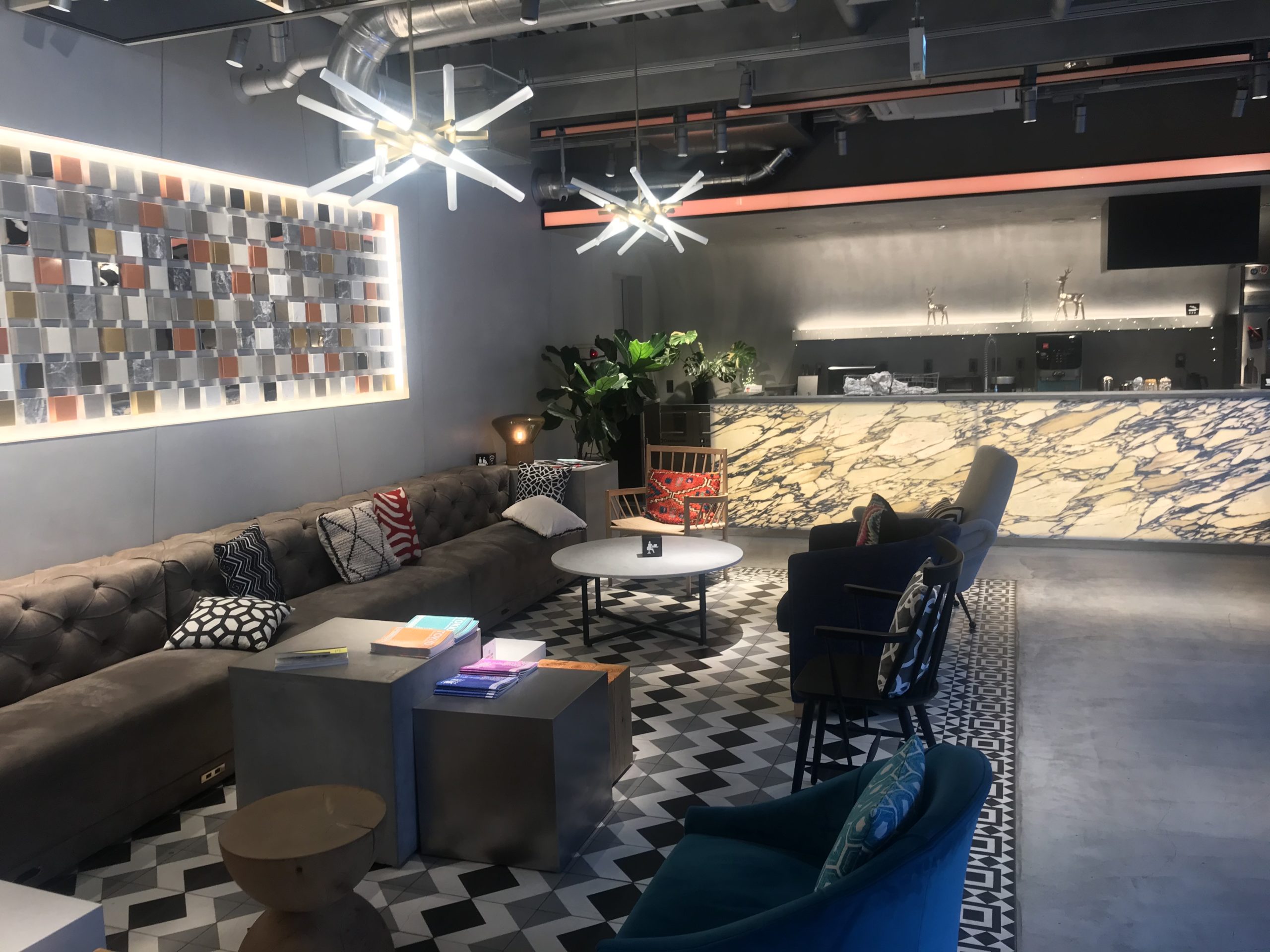
Unlike other capsule hotels, this property is bright, smoke-free, beautifully decorated, perfectly located (seven minutes’ walk from Shibuya station on mostly flat streets), and (during my stay) had older visitors as well. The bright, artsy lobby is perfect for informal social gatherings, while an “andwork” area on the floor below provides guests with quiet work space, a meeting area, booths and another kitchen.
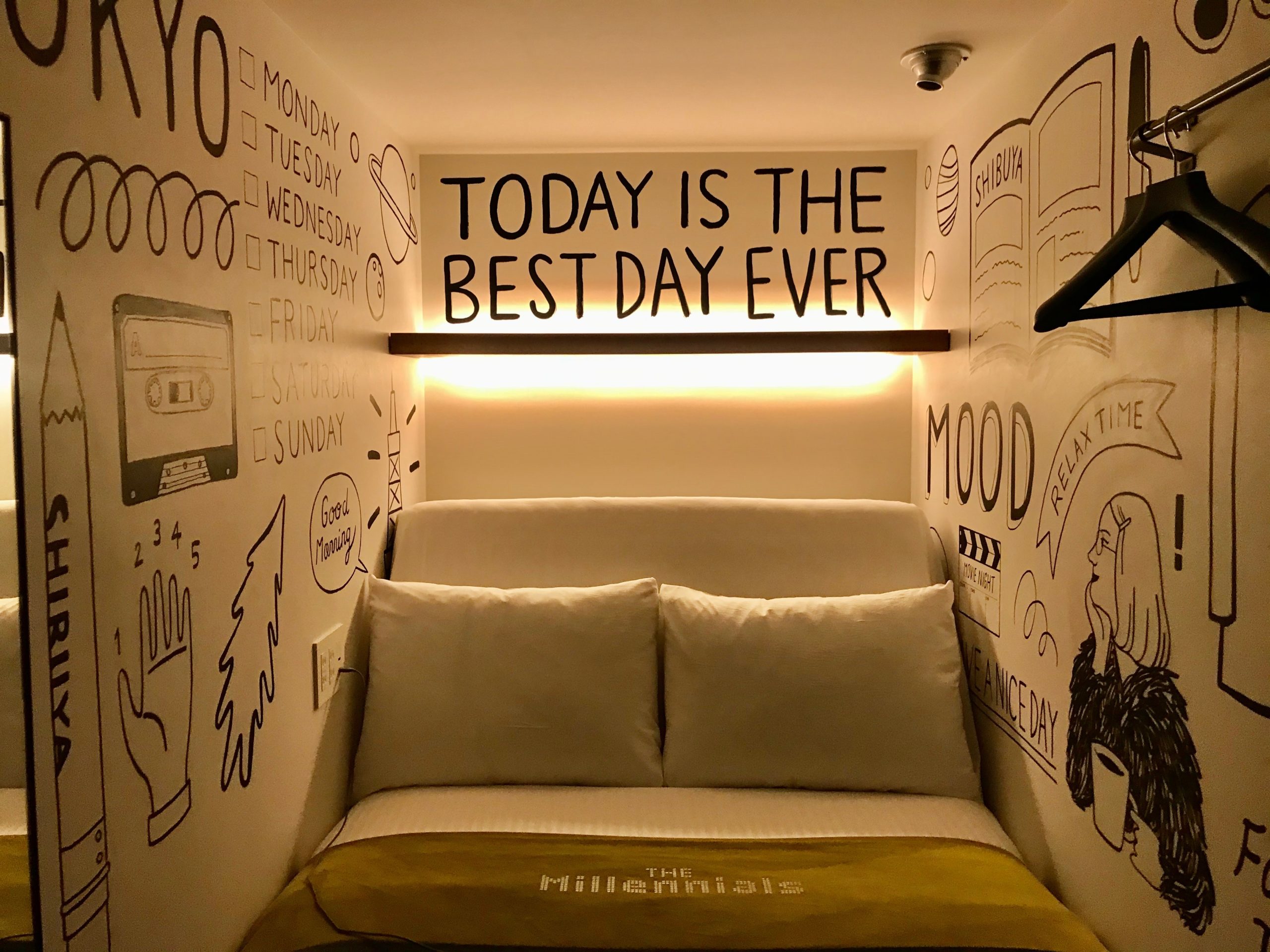
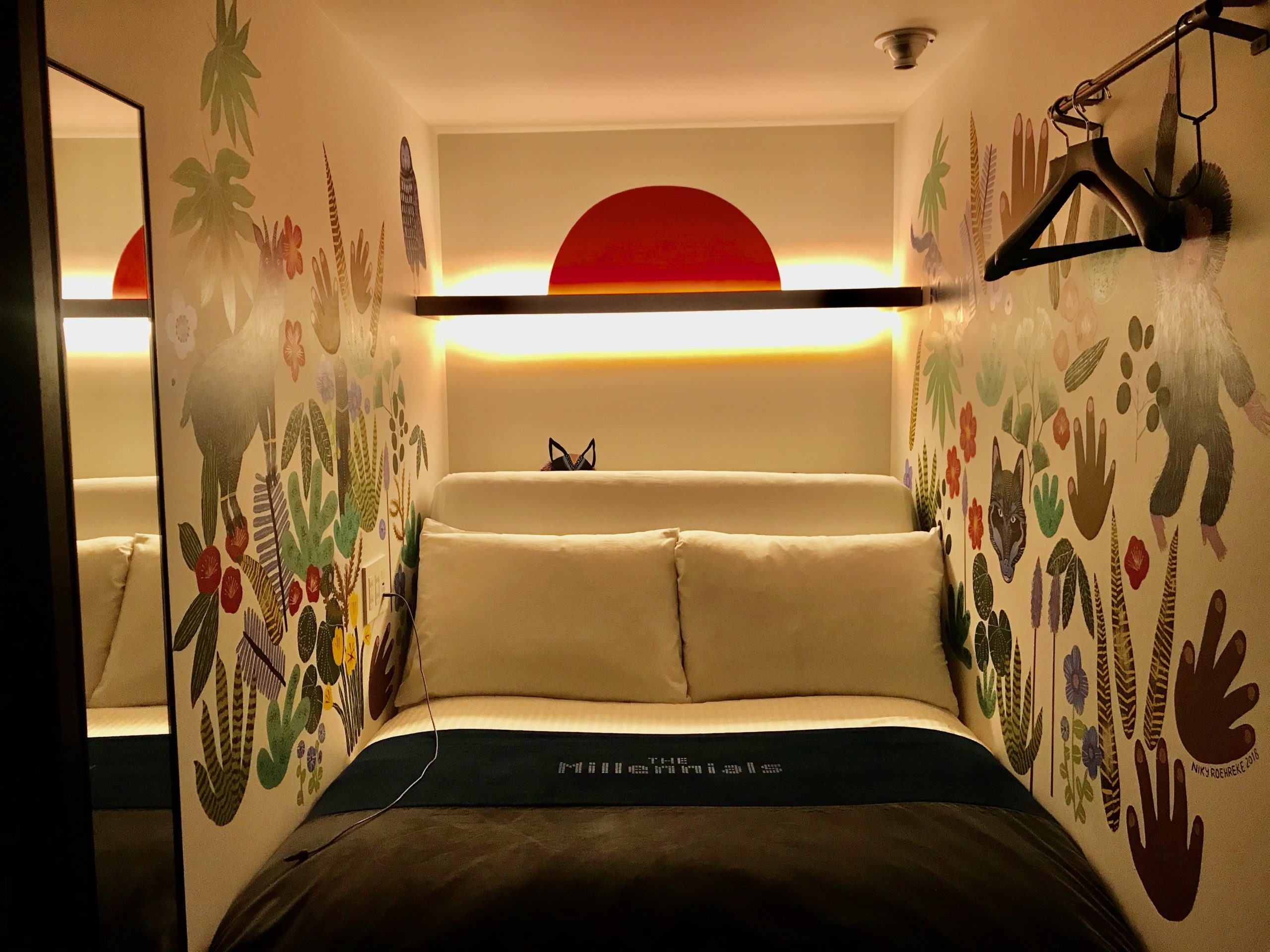
Another thing that sets Millennials apart is its selection of one-of-a-kind capsule rooms, decorated by local artists, that you can choose and book in advance online. All floors have spotless, impeccably maintained shared bathrooms with rain showers and high-quality toiletries found at more expensive hotels. Other perks include laundry facilities, crazy-comfortable Sleep-Number type beds, and iPads that adjust the bed, lighting, and air in your “smart pod) and get in and out of the building. There is also a free continental breakfast, fresh complimentary coffee served 24 hours and a weekday happy hour with free craft beer from a Tokyo producer.
An Osaka Option
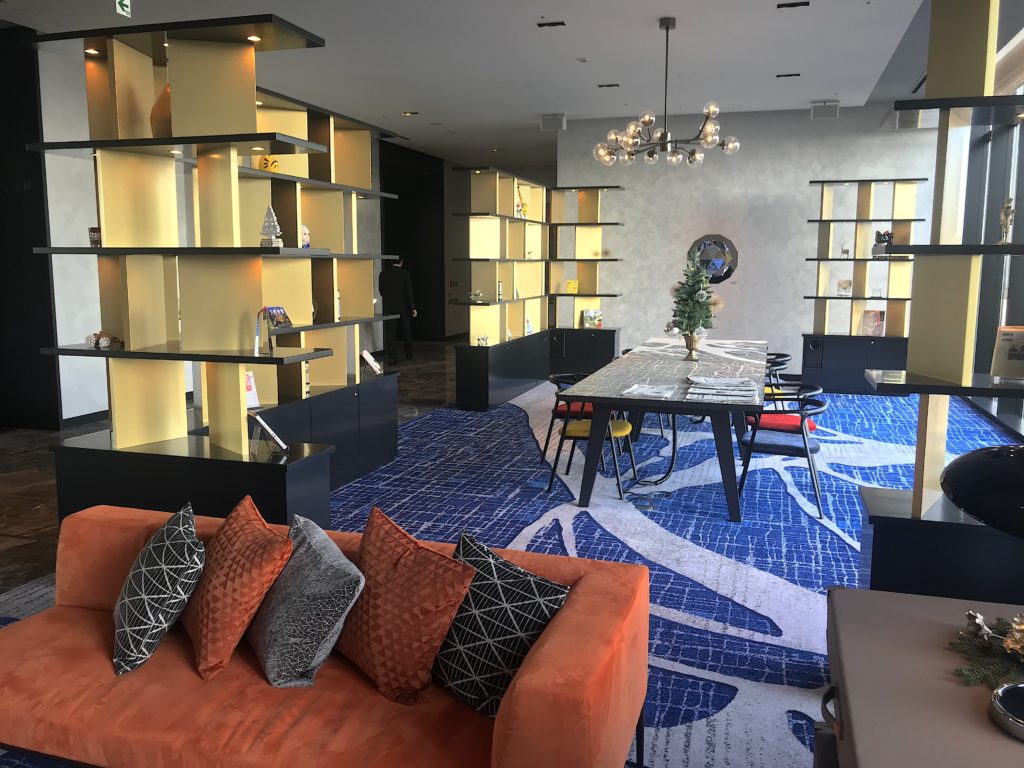
If your travels take you to Osaka, or you fly in and out of Kansai Airport to avoid the throngs in Tokyo’s airports, the Osaka Excel Tokyu Hotel proves to be as stylish as the Kengo Kuma-designed Capitol. Opened this past November, the property boasts cheerfully decorated public spaces and 364 private rooms and suites over 17 floors. While the basic design concept is rooted in generations-old Japanese aesthetics, its wow factor comes from the interior designers’ approach of filtering them through a kaleidoscope. This effect is accomplished with ornate hexagonal lamps, carpeting with geometric shape motifs and pops of happy gold and blue hues. The lobby adds to that with a welcoming, mod mix of artwork and decorative ornaments.
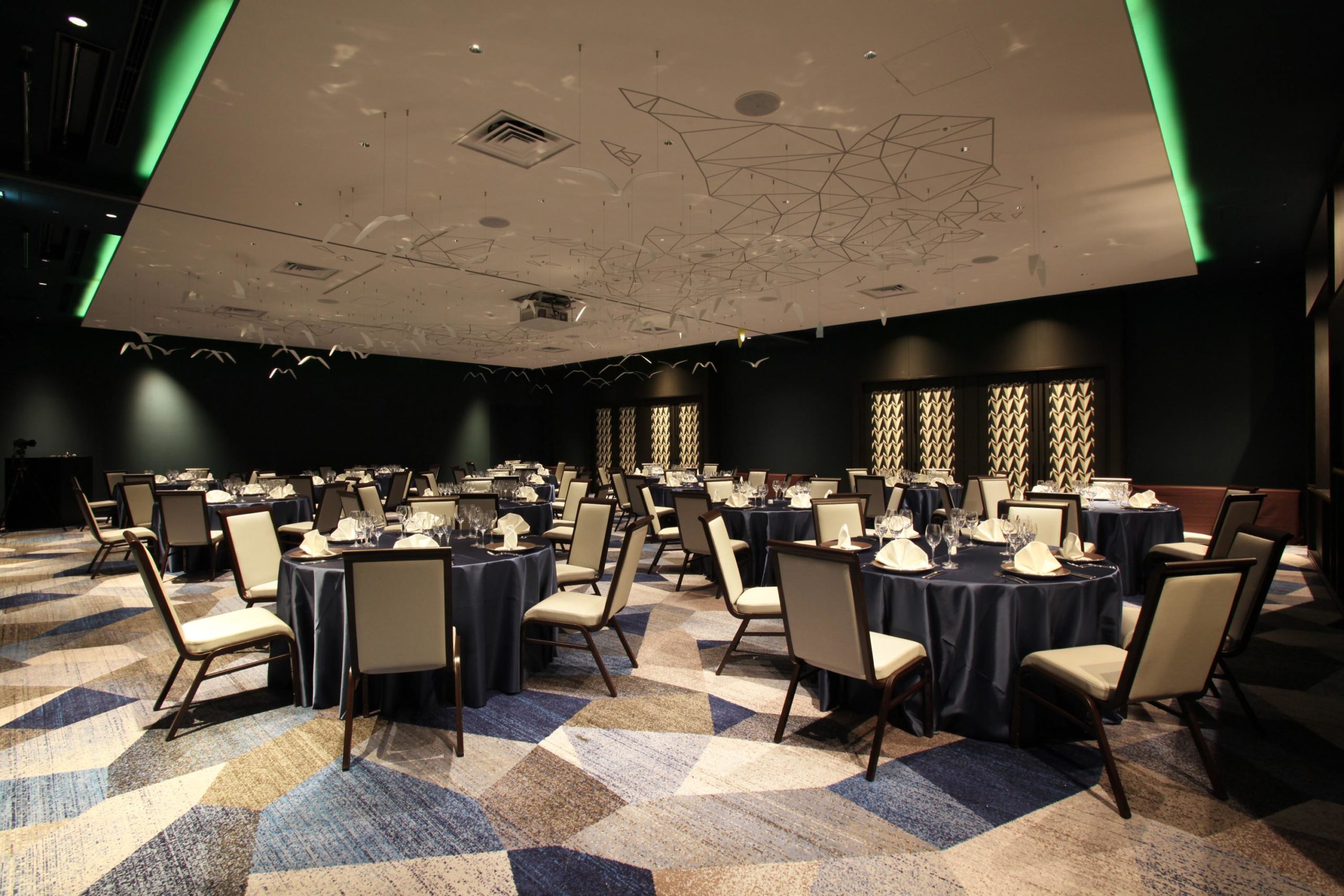
The smaller “Superior” (standard) double and twin rooms are very well designed in terms of how space is utilized. One “closet,” for example, opens up to a full-size restroom outfitted with a bidet. The shower/bath is actually generous space-wise and cleverly separated from the rest of the room with a strategically placed curtain. Even little design details are on point, such as visually appealing honeycomb-shaped shelving and a small but well-appointed work area. As you would expect from a better Japanese hotel, there are drawers filled with every amenity you may have forgotten at home, as well as pajamas and a fragrant spray to freshen up your clothing after a very long flight.
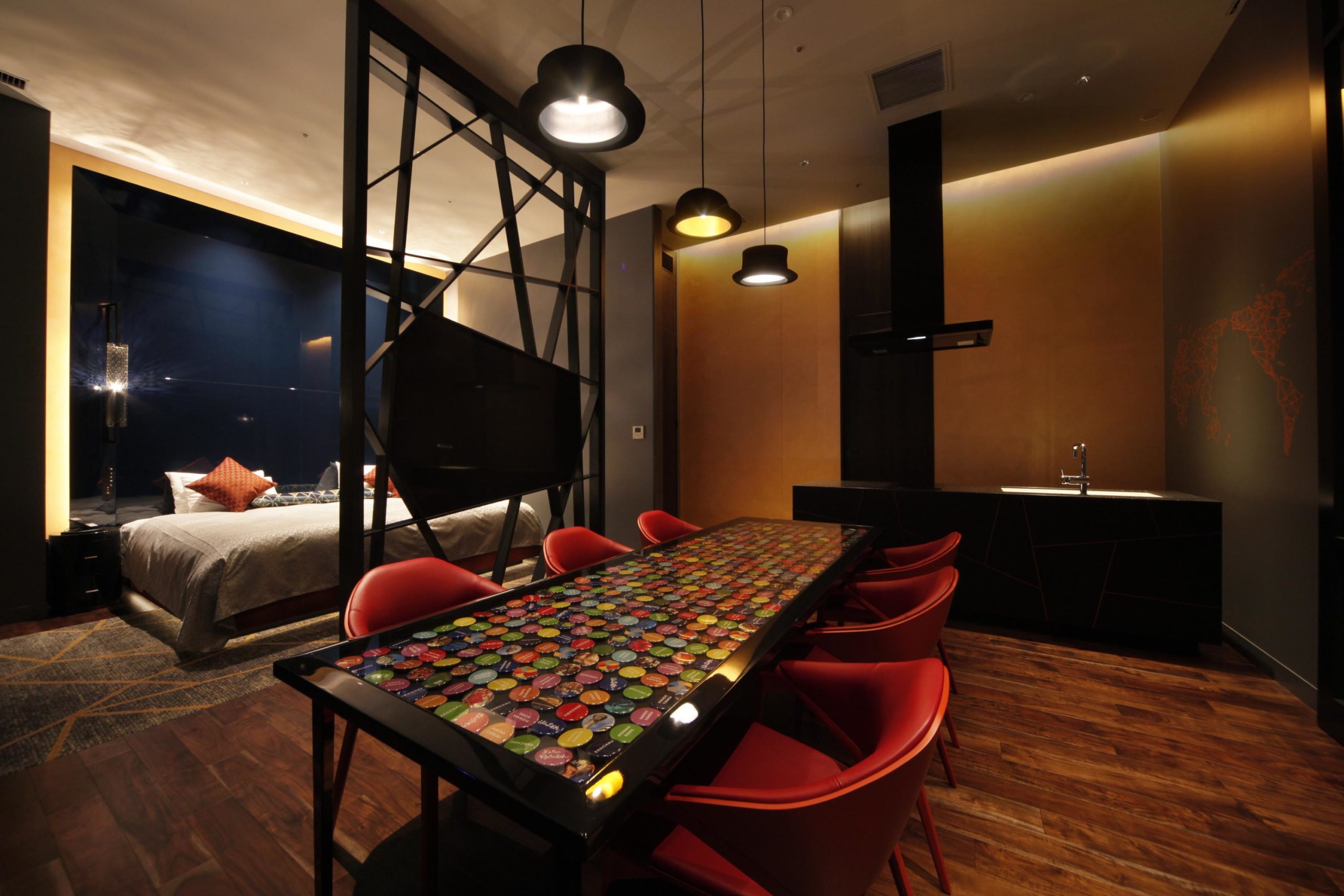
The Superior-category room options include “Accessible” twins that accommodate wheelchairs and strollers as well as more elaborate “Japanese” twins designed to create the feel of a Japanese home. Executives planning to surround themselves with greater opulence can look into booking the larger rooms on the Mido Floor, offered in four different style configurations (Taikoh, Ameura, Rikyu and Minami) inspired by the adjoining 400 year-old Namba Betsuin/Minamimido Temple. In addition to the epic views and full-on luxury home settings, these suites enable guests to access an executive lounge, library and complementary drinks. While the Minami and Rikyu rooms can double as small meeting spaces, the Osaka Excel also has the Sky Room, which can be set up for dinners, lectures and presentations. It accommodates 40-96 guests, and also carries through the hotel’s whimsical but sophisticated design theme.
Amenities corporate groups will appreciate include coin operated washer/dryers and microwave access on multiple floors as well as a fitness center and restaurant Pic*Nika, serving a breakfast buffet with great views. The location, along Midosuji Avenue (a.k.a. Osaka’s “Champs Elysee”), is minutes away from numerous convenience stores and Hommachi, a major subway station making access to the city’s top destinations. In addition to the Minamimido Temple, the hotel is a short walk from the Kuromon Ichiba food market and the bustling Dotonbori neighborhood.
The proximity to Hommachi Station also means that with a quick jaunt to the city’s main train station, Shin-Osaka, the hotel is a great jump-off point for your Tokyo Oympics adventures or a tour base for day trips into Kyoto, Nara, and Kobe. In town, the nearby station also makes it a breeze to get to key destinations such as Osaka Castle.
While food tours around the world are no-brainers when it comes to first day or retreat activities for corporate groups, Arigato Food Tours (arigatojapan.co.jp) has their approach down to a science in several major Japanese cities. Should you be staying in Osaka for a few days, don’t miss the opportunity to book your group in a conversation-starting day tour of either the Kuramon Market in Osaka and Nishiki Market in Kyoto, both which have interesting stalls and food vendors offering samples and food items unique to each city.
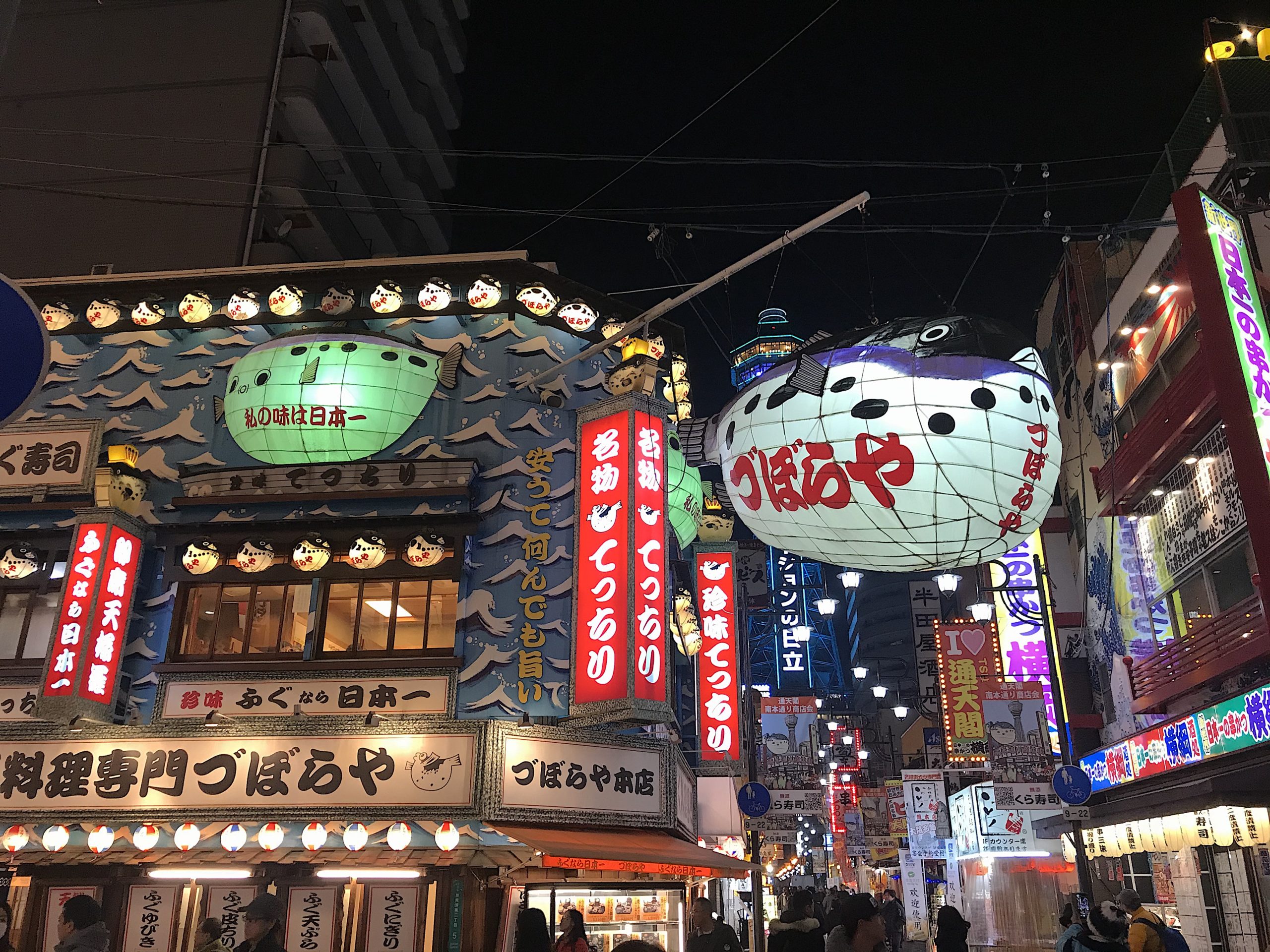
Although the nighttime Dotonbori Tour remains a best-seller, those preferring a quieter evening experience will love Arigato’s Shinsekai Tour, covering an Osaka neighborhood embraced by locals but less crowded than Dotonbori. With its game arcades and gift shops, the recently revived area retains the feel of a Coney Island and Paris-inspired amusement park that existed there decades ago. Prior to the building of the theme park in 1912, it was the birthplace of many beloved foods developed by and for its working class. A tour of this lively place includes a mix of arty cafes, specialty bakeries and tiny restaurants serving such local staples as pressed sushi, Takoyaki (octopus fritters) and Ohsho (breaded meat and veggie) skewers. There is also an eye-opening visit to Tower Knives, a renowned knife shop that chefs around the world swear by.

Tips and Tricks For Getting Your Games On
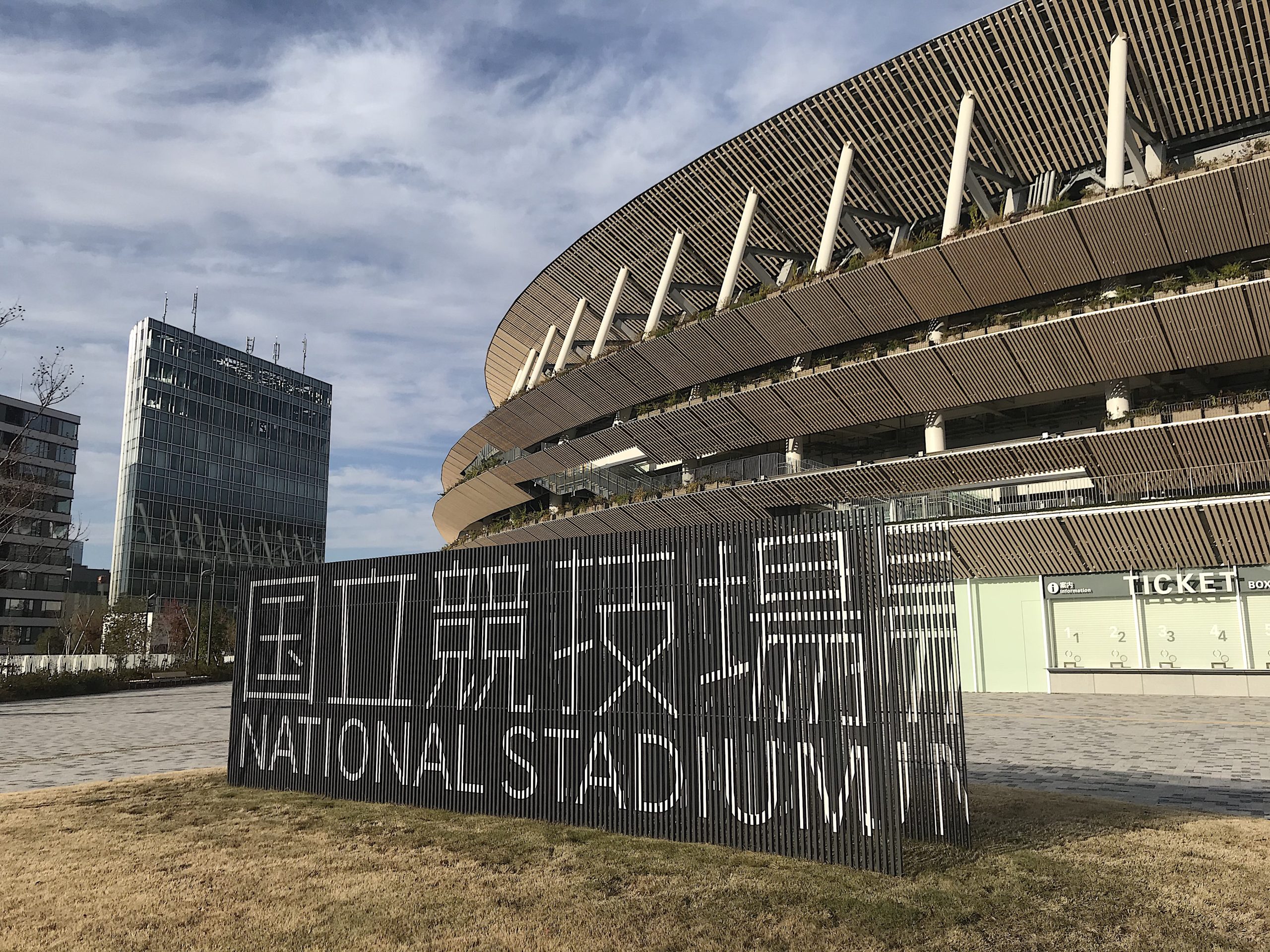
Tristan Lavier, a senior manager of Tokyo 2020 International Communications, advises visitors to not only thoroughly read through the official Tokyo 2020 website but also visit the Japan National Tourism Office’s website, which recently added a page dedicated guidance on how to navigate the city during the Games. As summer is peak travel season in Japan under normal circumstances, Lavier highlighted key common sense tips to ensure the best possible experience in Tokyo and other cities, including Sapporo, Sendai, Hokkaido and Fukushima:
- Book your hotel rooms and airline tickets as soon as possible.
- Add non-Olympic vacation days to the front and/or back end of your trip to minimize encounters with major crowds. This can involve flying in and out of other Japanese cities (i.e. Osaka or Nagoya) and purchasing a Japan Rail Pass (jrpass.com) to get to the games in Tokyo and other cities.
- Consider purchasing tickets to matches in Sapporo, Sendai, Hokkaido and Fukushima to not only support the regions’ re-emerging post-2011 earthquake economies, but also experience foods and culture unique to those places.
- Purchase a “PASMO” or “SUICA” transportation card, which you can reload with money easily. Both cards work for Tokyo’s subway and bus lines, as well as those in other major cities.
- Stage your “base camp” in one of Tokyo’s outlying regions, where your hotel options will be somewhat more plentiful. Once you pick a spot, be sure to learn the train schedule connecting your hotel and the events you have tickets for to arrive on time.
- Study the maps of Tokyo before you fly to familiarize yourself with the “Heritage Zone,” around the Shinjuku and Shibuya quarters, and the Tokyo Bay Zone and what local busses and trains go where. The majority of venues for the different events are steps away from some of the city’s best attractions and most interesting neighborhoods.
- As July and August are Tokyo’s warmest months, pack light and accordingly. You can also bring fans, empty water bottles and sports towels from home, or make a shopping list necessities to purchase when you arrive.
- Have enough cash on hand, as smaller restaurants and some shops do not accept credit cards.



